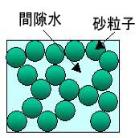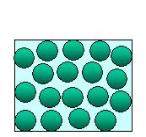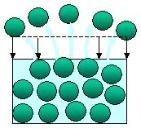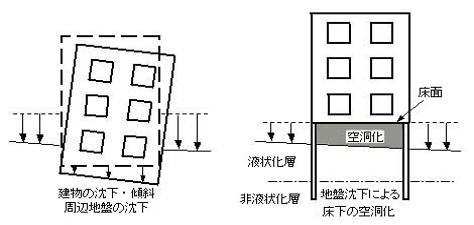Here's the text.
Liquefaction map
Last Updated May 27, 2021
Liquefaction map illustrates the liquefaction risk distribution of three earthquakes targeted for damage assumption in "Yokohama-shi earthquake damage assumption investigation" announced in October, 2012.
Notes for viewing the liquefaction map
- The PL value was used to determine the risk of liquefaction. The PL value is a value that indicates the risk of liquefaction at that point.
- Areas where liquefaction measures are taken in advance, such as the Minato Mirai 21 district in Nishi Ward, are excluded from liquefaction judgments.
- Since liquefaction is determined based on typical ground boring data around the 50-meter mesh, the mesh may contain ground that is unlikely to cause liquefaction.
- Even in areas where the risk of liquefaction is high, there are places where liquefaction has already been improved and land has been used, and places where liquefaction measures have been implemented in buildings, etc. About, we recommend that you carry out ground investigation individually and consider measures.
Download of liquefaction map
If you select an assumed earthquake from the following, you can check the liquefaction map for each ward. (Please click the ward you want to see at the link.)
- Liquefaction Map (Genroku era Kanto Earthquake)
- Liquefaction Map (Northern Tokyo Bay Earthquake)
- Liquefaction Map (Nankai Trough Giant Earthquake)
Q&A related to liquefaction phenomenon
Q1. What does "liquefaction phenomenon" mean?
Q2. I understand that the land I am planning to build a building is a liquefaction-friendly ground, what should I do?
Q3. It is said that a place with bad ground is okay if it is a solid foundation, is it true?
Q4. Is middle- and high-rise buildings such as condominiums OK on liquefaction-friendly grounds such as landfills?
Q5. What measures should be taken in a detached house?
Q6. I often hear that landfills are dangerous because the ground liquefaction occurs during an earthquake, but what measures are being taken in Yokohama landfills against earthquakes?
Mechanism of Liquefaction
Liquefaction is a phenomenon in which the ground temporarily becomes liquid due to an earthquake. A phenomenon that occurs on sandy ground that contains a lot of water, such as landfills and estuaries, and tilts and sinks buildings on the ground.
This phenomenon was noted due to the continued damage such as the collapse of apartments and the collapse of new bridges following the 1964 Niigata Earthquake. Recently, Port Island and Rokko Island were also attracting attention during the 1995 Hyogoken Nanbu Earthquake (Great Hanshin-Awaji Earthquake).
When a layer of sand that is saturated with groundwater that maintains a certain balance ([1]) is shaken by a strong earthquake, the water in the gap between sand and sand will be pressured, and the interaction between sand will be removed. And finally, the grains of the sand come off, and the sand particles are floating in the water. ([2] state) After that, the extruded water overflows with sand on the surface. ([3] state) The phenomenon in which the ground becomes like a liquid is called the "liquefaction phenomenon."

[[1] Before the earthquake]
The sand grains bite each other
A stable state
![]()

[2] During liquefaction
The texture of sand grains
A state of muddy water
![]()

[[3] After the earthquake]
Sand grains are re-deposited
The condition in which the ground has subsided
(fountain sand, fountain)
If the ground liquefaction occurs, the power to support the building will be lost, or the building or the ground itself will sink unevenly, causing the following damage.

Measures against liquefaction in our homes
Avoid ground that is easy to liquefaction
The following places are places where liquefaction is likely to occur. If buildings must be built on such ground, damage can be reduced by taking measures.
- A place with high groundwater level on sandy ground
- In the past, places where rivers, paddy fields, swamps, coasts, etc. were reclaimed, or created
Strengthen the ground
In liquefaction countermeasures, ground improvement is an effective method. Based on past earthquake damage experience, there is a survey result that damage will be reduced if there is a stratum that does not liquefaize to a depth of about 2m from the ground. . Therefore, ground improvement such as tightening the ground to this depth or replacing it with soil that is difficult to liquefaction is said to be the most effective method of liquefaction countermeasures.
Building that is resistant to liquefaction
It is also effective to make the shape of the house a simple shape (rectangle) that is strong against earthquakes, or to reinforce the foundation of the building.

Earthquake-resistant shape
(Simiple shape for both plane and elevation)

Earthquake-resistant shape
(The shape of the plane is uneven.)
Related link
Yokohama City Earthquake Damage Estimation Survey Report
Earthquake map
Inquiries to this page
Regional Disaster Prevention Section, General Affairs Bureau Crisis Management Department
Telephone: 045-671-3456
Telephone: 045-671-3456
Fax: 045-641-1677
Email address: so-chiikibousai@city.yokohama.jp
Page ID: 663-420-650







